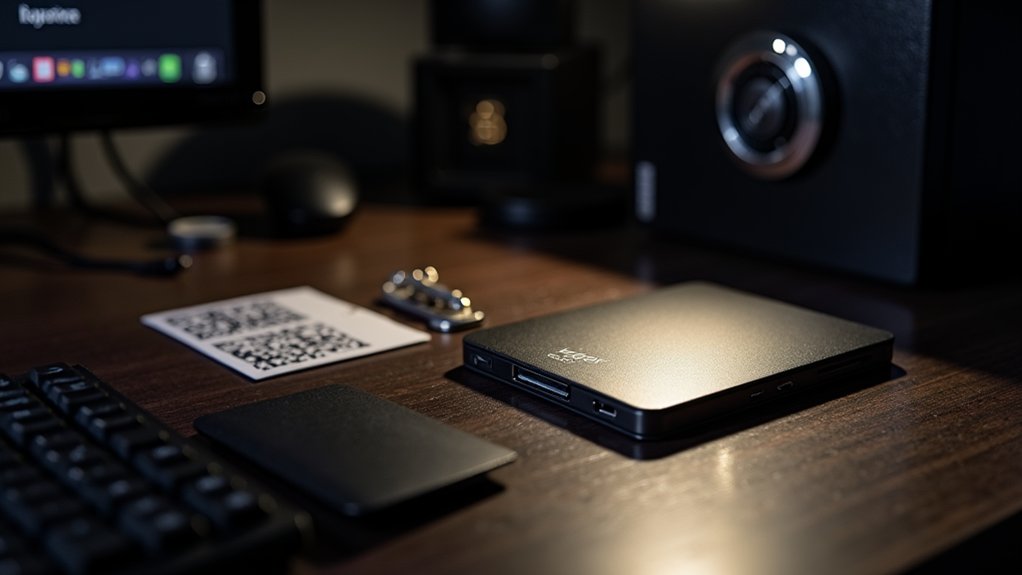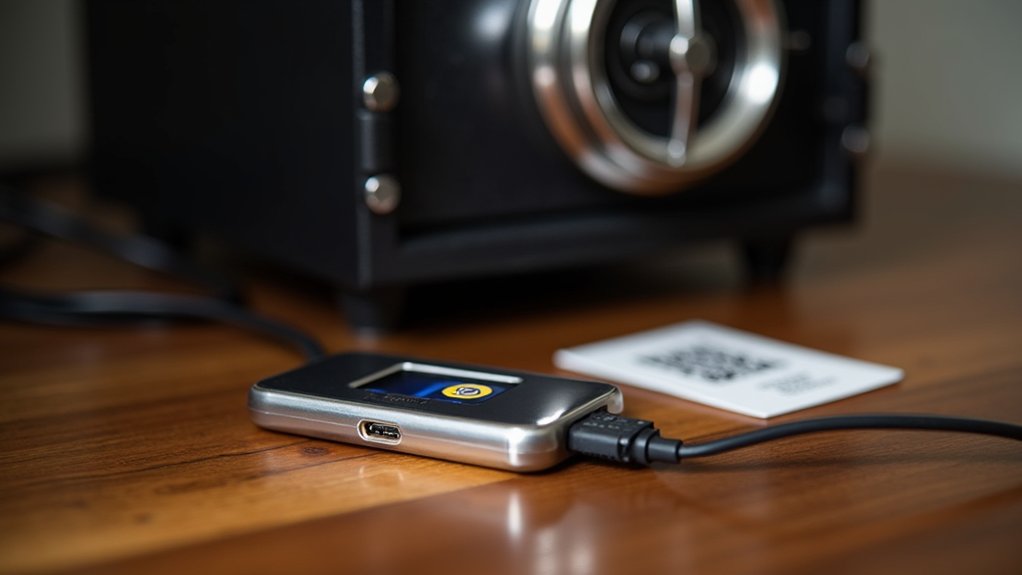Storing cryptocurrency offline, known as cold storage, provides ideal security by keeping private keys disconnected from the internet. Hardware wallets like Ledger and Trezor utilize secure chips for enhanced protection, while paper wallets offer a cost-effective alternative through printed keys. Effective implementations include multi-signature verification, encrypted backups across different physical media, and careful protection against phishing attempts. While portfolio values increase, diversified storage strategies become increasingly critical to safeguard digital assets from evolving security threats.

While digital assets offer unprecedented financial autonomy, their security remains dependent upon robust storage protocols that safeguard private keys from unauthorized access. Offline storage solutions, commonly referred to like cold storage, represent the gold standard for cryptocurrency security by maintaining private keys on devices completely isolated from internet connectivity, thereby dramatically reducing exposure to malware, remote hacking attempts, and other network-based vulnerabilities that plague online wallets. Unlike traditional banking, cryptocurrency transactions are completely irreversible once executed, making security even more critical.
Cold storage solutions establish the security foundation upon which true digital asset autonomy can finally be realized.
Financial prudence dictates maintaining only essential operating funds in internet-connected hot wallets while securing the majority of holdings in cold storage arrangements, particularly like digital asset portfolios increase in value. Regular software updates are essential for maintaining the integrity of any wallet system against emerging threats. The process of moving crypto to cold storage typically involves generating addresses from your hardware wallet and sending funds from exchanges to these secure locations.
Hardware wallets have emerged like the predominant offline storage mechanism, with devices from Ledger, Trezor, and KeepKey utilizing specialized secure chips that store private keys in tamper-resistant environments. Unlike standard USB drives with encryption, these purpose-built devices incorporate cryptocurrency-specific firmware and often support multi-signature functionality, enabling transaction verification through physical button confirmation rather than potentially compromised software interfaces.
For institutions or individuals with substantial holdings, air-gapped systems—computers never connected to networks—represent an elevated security tier, often implementing security-focused operating systems like Tails or Qubes to minimize attack surfaces.
Paper wallets, while technologically simplistic, offer a highly secure alternative when properly implemented, involving offline generation of private keys and corresponding QR codes that are physically stored in secure locations like fireproof safes or bank vaults. The imperative nature of backup considerations cannot be overstated, like improper key management may lead to permanent fund inaccessibility.
Multi-signature wallets address this concern by distributing trust across multiple keys, requiring a predetermined threshold of signatures (e.g., 3-of-5) for transaction authorization, thereby mitigating single points of failure.
Comprehensive offline storage strategies typically incorporate multiple security layers, including encrypted backups distributed across physical media, vigilant protection against sophisticated phishing attempts, and strategic diversification of storage methodologies appropriate to holding size and risk tolerance—practices that have become essential like cryptocurrency values continue to fluctuate in volatile markets.
Frequently Asked Questions
How Do I Recover My Crypto if My Hardware Wallet Breaks?
In the event of hardware wallet failure, cryptocurrency recovery requires the owner's seed phrase, a series of 12-24 words generated during initial wallet setup.
Users must obtain a new hardware wallet, select the "restore from seed" option during initialization, and manually enter their offline-stored seed phrase. This process regenerates the private keys, restoring access to all blockchain assets.
For enhanced security post-recovery, implementing a new PIN, enabling two-factor authentication, and transferring funds to fresh addresses is strongly advised.
Can Offline Storage Protect Against Quantum Computing Threats?
Offline storage offers limited protection against quantum computing threats, since public keys exposed during transactions remain vulnerable to "harvest now, decrypt later" attacks.
Despite physical isolation, once a wallet transacts, its public key becomes permanently visible on the blockchain, creating quantum vulnerability.
Emerging solutions include quantum-resistant algorithms (CRYSTALS-Kyber, SPHINCS+), tamper-resistant hardware with post-quantum cryptography, and hybrid encryption layers that combine classical and post-quantum methods for enhanced security.
Are Paper Wallets Still Considered Secure for Long-Term Storage?
Paper wallets remain theoretically secure for long-term storage due to their offline nature, which protects against remote hacking attempts.
However, their practical security is compromised by physical vulnerabilities, including degradation, loss, and damage risks.
Modern alternatives like hardware wallets offer superior protection through environmental robustness, simplified recovery processes, and physical durability.
For truly long-term storage, paper wallets should be supplemented with redundant backups and physical safeguards against environmental threats.
How Often Should I Check My Offline Crypto Holdings?
Security experts recommend conducting thorough checks of offline crypto holdings at least quarterly, with additional verification after significant market volatility, blockchain updates, or security events.
This schedule balances operational security with practical monitoring needs, though high-value portfolios may warrant monthly inspections.
Best practices include confirming wallet functionality, validating backup integrity, and reviewing hardware wallet firmware for vulnerability patches, all while minimizing exposure of private keys.
What Happens to My Offline Crypto if I Die?
Offline cryptocurrency holdings, without proper estate planning, may become permanently inaccessible upon death, since private keys and recovery phrases are required for asset transfer.
Heirs cannot access these digital assets unless the deceased has implemented specific inheritance protocols, like documented key storage locations, multi-signature wallets, or trust arrangements.
While the assets technically remain on the blockchain, they effectively become "dead wallets," contributing to the estimated 20% of Bitcoin permanently removed from circulation due to lost access credentials.









